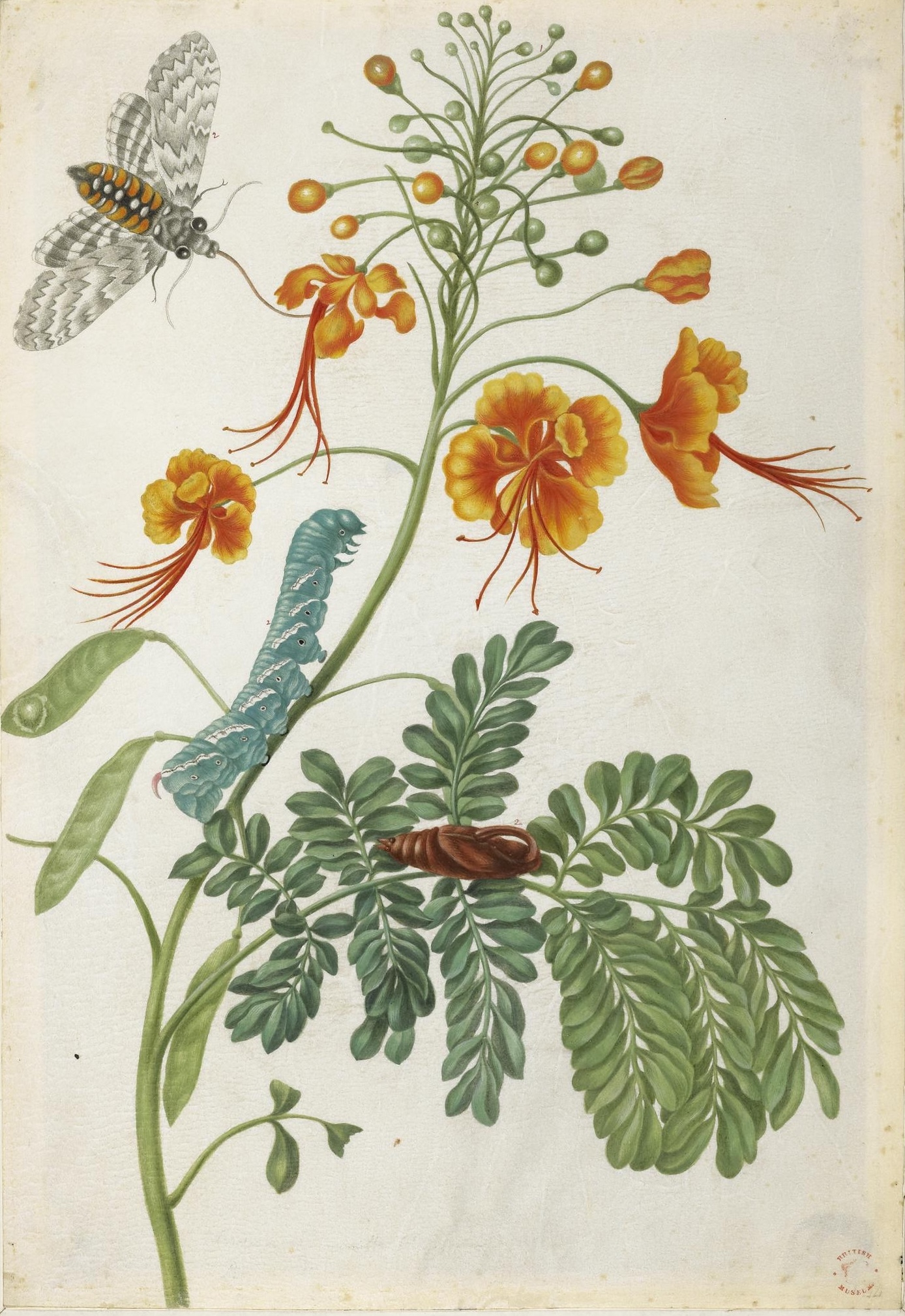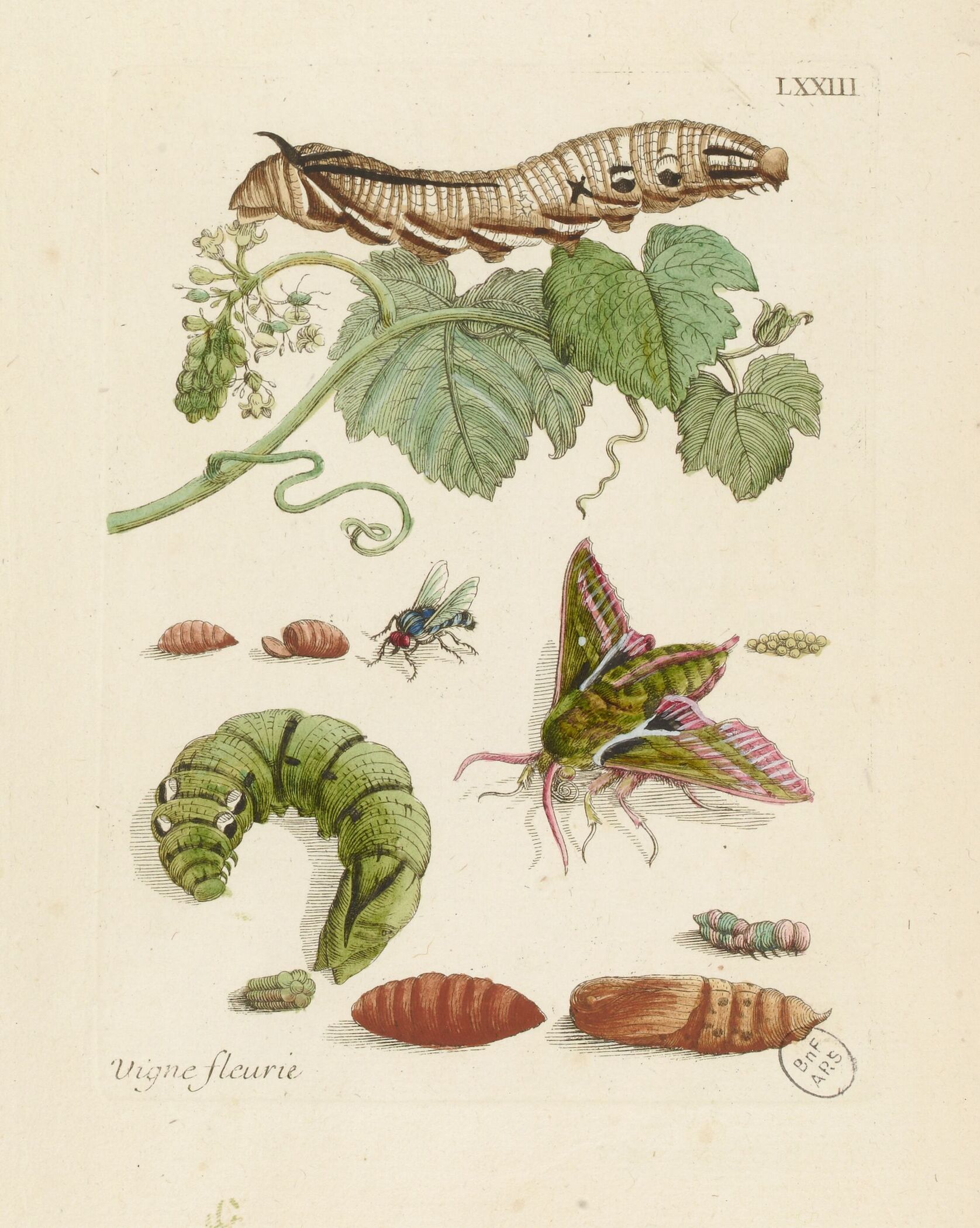Representation of the whole ecosystem
Most natural history illustrations in the 17th century focused on a single plant species, along with all the parts of the plant in great detail. With the advent of compound lenses and early microscopes, there was also interest in magnifying small parts of plants or insects. The norm was not to show the plant along with its pollinators and its surrounding habitat.
Maria was very observant, and her compositions consistently tell a more complete story of a plant in its niche, with pollinators and other members of the ecosystem. Since Maria observed insects throughout their entire life cycle, she was able to observe all intermediary stages of a life cycle and illustrate them clearly to help debunk myths of spontaneous genesis.
“The Indians, who are not treated well by their Dutch masters, use the seeds to abort their children, so that they will not become slaves like themselves. The black slaves from Guinea and Angola have demanded to be well treated, threatening to refuse to have children. In fact, they sometimes take their own lives because they are treated so badly, and because they believe they will be born again, free and living in their own land. They told me this themselves.”
—Maria Sibylla Merian, Metamorphosis insectorum Surinamensium. Gerard Valck, Amsterdam [1705]
Maria broadened her focus to tropical plants and animals during her trip to Suriname. However, her continued focus on the life cycles of insects and the plants they pollinated made the illustrations that she created complete ecological studies of the species in question. ‘Metamorphosis Insectorum Surinamensium’ included over 60 detailed plates, associated with textual explanations. An illustration of note is that of the attractive Peacock flower, where Maria included an acknowledgement of the difficulties of the indigenous slaves who were helping her, after learning from these helpers that the seeds of the plant were used to induce abortions.





